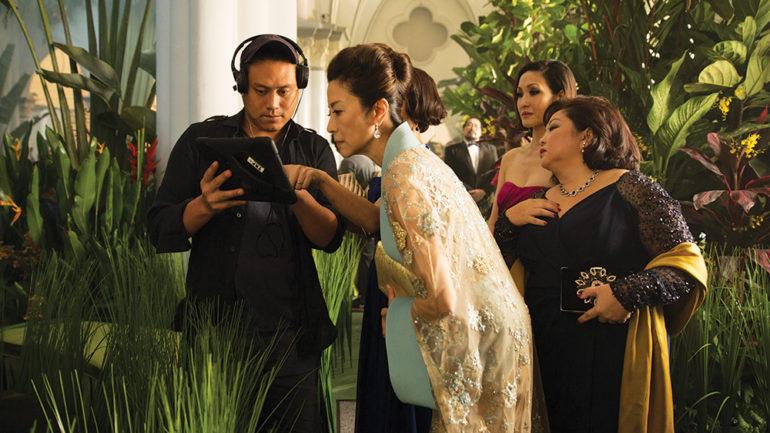Jon M. Chu on ‘Crazy Rich Asians’: ‘We Had a Sense of Purpose’
By Tim Gray
LOS ANGELES (Variety.com) – Making any movie is hard, but nothing is more challenging than creating a film that looks fun and effortless — and original. Warner Bros.’ “Crazy Rich Asians” succeeds on all three counts, and the film’s popularity proves that it struck a nerve with filmgoers.
“From the start, we wanted more than a romantic comedy,” director Jon M. Chu tells Variety. “We had something to say. That was not just from the writers; that’s from the actors, the crew, everyone; there was a sense of purpose.”
The film looks at family and tradition, but it’s fundamentally about identity, which is a struggle of the heroine (Constance Wu), her fiance (Henry Golding) and her future mother-in-law (Michelle Yeoh). But it’s also about the very different cultural identities of Chinese, Chinese-Americans and the specific subset of wealthy Chinese people living in Singapore.
With $238 million worldwide box office, it’s clear the film had appeal far beyond those demographics. “The universality was created through the specifics,” says Chu. But it wasn’t easy to create that world on a $30 million budget.
“When you’re called ‘’ but you don’t have a crazy rich budget, it can be extremely challenging,” laughs Chu. But they were able to achieve a lush look thanks to the work of costume designer Mary Vogt, production designer Nelson Coates and cinematographer Vanja Cernjul, among others.
Chu and his colleagues did a lot of research into that world, which is also underlined by cultural-specific montages of shopping and spa outings, dim sum, Mahjong and smart phones, via great work by editor Myron Kerstein.
The movie became a symbol and a test case, since it was only the third film in 50-plus years from a Hollywood major starring an all-Asian cast (after 1961’s “Flower Drum Song” and 1993’s “Joy Luck Club”).
In retrospect, the success seems like a slam-dunk, starting with the screenplay by Peter Chiarelli and Adele Lim, adapting the novel by Kevin Kwan. But Chu says at every step of production, there were endless naysayers, particularly online. Chu says, “I think there were a lot of scared people. They were scared of how Hollywood was going to represent Asians and Asian-Americans. They were scared of us getting it wrong.
“Everyone got beat up, especially the actors. But we knew the importance of what we were doing. We wanted to move the representation forward on what we hadn’t seen onscreen. We said, ‘Don’t get into a Twitter war. Let’s just make a great movie.’ ”
One mark of its success is the kudos attention, including a SAG Award nomination for ensemble and buzz. “You’re humble about your movie, but then there’s a moment when you say, ‘Our people deserve to be recognized.’ I’m excited to be celebrating with the community of Hollywood that is changing and moving, and I think our cast represents that change. We’re grateful,” says Chu.
The movie seems to be a gamechanger. “We weren’t allowed to fail on this one. I hope that burden is lifted; I hope it’s lightened the pressure on other films.”
That appears to be the case. Chu is hoping to make two back-to-back sequels to “Crazy Rich Asians,” if everyone’s schedule can be arranged. Plus, he says with enthusiasm, “The studios, networks and streaming services are taking a chance on Asian stories and Asian-American stories. We are going through a renaissance and I can’t wait to see the results in the next few years.”
In addition, USC just announced the APAA Cinematic Arts Scholarship, to students whose projects focus on Asian-Pacific culture. The director said, “It’s surreal! A couple of very generous USC donors saw the movie and heard me speak, and asked to do a scholarship in my name. I’m overwhelmed by the generosity and the movement to make a real on-the-ground difference, to tell more stories like this.”

